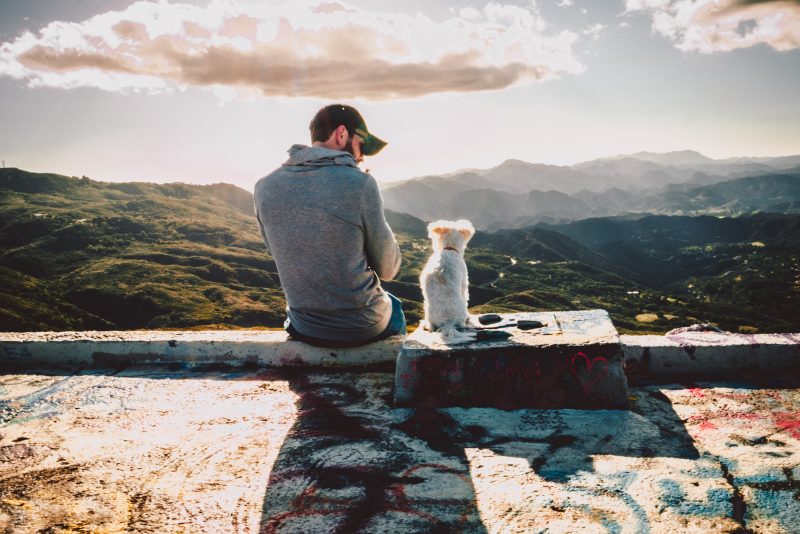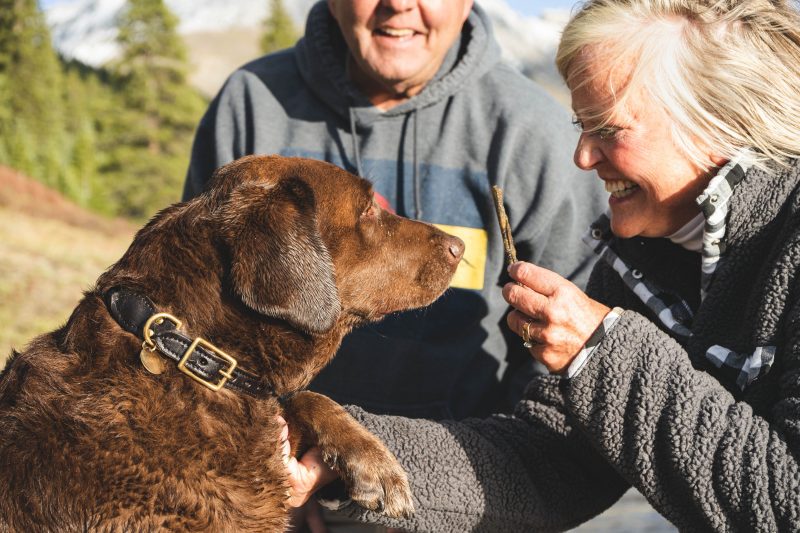In the last post, Our Role as Pet Parents Part 2, we looked at our dog’s needs and how Nigel Reed, author of The Dog Guardian, adapted Maslow’s hierarchy of needs to canines.
In this post, let’s have a quick look at Nigel’s view on how wolf pack leaders meet those needs and how we must also meet those needs as pet parents or guardians.
What if dog leadership needs aren’t met?
Q. What happens if we don’t meet our dog’s needs as leaders?
A. They are forced to take on leadership roles to meet those needs.
This can lead to all sorts of unwanted behaviours as our dogs try and fail to take on a leadership role in a complex human world.
Nigel highlights the four main leadership areas: Food, Perceived Danger, Status, and On the Hunt.
These things aren’t taught to us…
Up to this point, I’d been reading the book and nodding along, thinking that yes, this absolutely makes sense and just fits in perfectly with the Bounce and Bella way, but…
Here was where theory began to cross over into practice, and I could see the ways I’d been going wrong personally with my interactions with our lovely Roscoe.
But these things aren’t taught to us when we get our new woofy companion.
If we’re lucky, particularly conscientious or interested, we may stumble upon this kind of training information, but for most of us, training consists of the basics such as; sit, lie down, toilet training and a reasonable recall.
Now that I’ve read the book, I can see what’s been going wrong, but I also have a blueprint to help change Roscoe and (more importantly) my behaviour.

Four Main Dog Leadership Areas
Here is Nigel’s summary of how the key leadership areas for wolf packs – Food, Perceived Danger, Status and On the Hunt – translate to our roles as pet parents/guardians:
“1. Leader around food – your dog understands you will provide the food and are entitled to priority feeding.
2. Leader regarding security needs – your dog understands that you will decide what to do regarding perceived dangers and trusts your decisions.
3. Leader who instigates interaction – your dog understands that you decide when it is time to interact and is relaxed when you leave, and when you come in.
4. Leader on the walk – your dog understands that it is you who instigates when to go on the walk, where you walk, and at what speed, and it follows.”

The Dog Guardian Nigel Reed
I don’t want to go into too much detail here because,
(a) that’s what the book is for – and I really do encourage you to have a look at it:
https://www.thedogguardian.com/buy-the-dog-training-book
(b) And it’ll be great to cover some of these things with Roscoe in future posts!
PS
If you’re interested and want to find out more about our pet parenting roles (as well as seeing how I get on trying to become the pet parent Roscoe needs) – click the link to sign up for our newsletter: Newsletter Sign-Up.



Looking for professional Car Transport Services in Bangalore? Grewal Transport Packers and Movers is your trusted partner for safe and secure car relocation. We use specialized car carriers and advanced loading techniques to ensure your vehicle reaches its destination on time and in perfect condition. Our experienced team handles every step with care, making us the top choice for vehicle shifting across India.
Moving in or out of Kolkata? Gati House Shifting Kolkata offers expert relocation services for households, offices, and vehicles. Our professional team ensures safe packing, secure loading, and timely delivery. With years of experience, we guarantee a stress-free move across local or long-distance locations at affordable prices.
At Sindoor Property Real Estate, we bring you handpicked options for Commercial Property for Sale in Bahalgarh Jhajjar. Our goal is to provide clients with access to profitable and well-located properties that boost business efficiency and returns.
Thanks for sharing your thoughts. NAPS I really appreciate your efforts and I will be waiting for your further write ups thanks once again.
What I appreciate most about lady escort dubai is its thoughtful presentation and genuine sense of sophistication. Unlike many directories that feel cluttered or overwhelming, this one is clean, modern, and welcoming. Every listing feels authentic, and the attention to detail in both layout and user experience is clear. The site flows smoothly, making it simple to find exactly what you’re looking for without hassle. It’s also refreshing to see a platform that prioritizes both elegance and discretion equally. Whether you’re browsing casually or searching for something specific, it delivers on every level. Truly impressive work.
Rehousing Packers And Movers Hyderabad to Kolkata. Whether you’re shifting your home or office, our experienced team ensures safe packing, secure loading, and on-time delivery. We utilize high-quality materials and modern techniques to safeguard your belongings throughout the move. With transparent pricing and excellent customer support, we make long-distance relocation stress-free and convenient. Trust us for a seamless and hassle-free moving experience every step of the way.
Thanks for sharing. I read many of your blog posts, cool, your blog is very good.
This post nails the key points. For anyone planning to move, I recommend using house shifting services in Gurgaon from Grewal Packers. They make relocation quick and easy.
Sindoor Shifting is a trusted name in the relocation industry, offering reliable and efficient packing and moving services across India. With a team of skilled professionals and years of experience, we specialize in residential, commercial, and vehicle shifting. At Sindoor Packers and Movers, we prioritize the safety of your belongings, using high-quality packing materials and modern equipment to ensure damage-free transport. Our customer-focused approach and timely delivery make us a preferred choice for hassle-free moving solutions. Whether it’s a local move or a long-distance relocation, Sindoor Shifting guarantees a smooth and stress-free experience for every client, every time.
DTDC Packers and Movers is a leading relocation and logistics company, dedicated to making every move simple, safe, and seamless. DTDC Packers and Movers specializes in household shifting, office relocation, vehicle transportation, and international moving services. We bring expertise, professionalism, and care to every project.
The website milf escort london offers a seamless and enjoyable user experience. The layout is clean and intuitive, making navigation effortless. Services are top-notch, ensuring customer satisfaction. Response times are quick, and support is always helpful. The content is well-structured and informative. Overall, a reliable and efficient platform.
If you’re looking for hassle-free vehicle relocation with affordable car transport prices in Gurgaon, Gati House Shifting is a trusted option. Their dedicated team uses secure methods to handle your vehicle, ensuring it reaches its destination safely while keeping the costs within your budget.
Singhania Packers provides reliable self storage services in Mumbai, ideal for both personal and business storage needs. Our clean, secure storage units offer a safe solution for household items, office inventory, or seasonal goods. With flexible rental options, 24/7 security, and climate-controlled choices, your belongings remain well-protected. Conveniently located, our facility allows easy access to your stored items whenever required. Singhania Packers’ self-storage services in Mumbai make it easy to free up space and stay organized without the hassle. Store with confidence and enjoy peace of mind with our trusted solutions.
我们提供专业的Essay代写 https://www.lunwenhelp.com/essay-daixie/ 服务,拥有一支由经验丰富的学术写作专家组成的团队,涵盖多个学科领域。无论你是需要撰写文学分析、商业案例研究,还是科学实验报告,我们都能根据你的具体要求为你量身定制高质量的Essay。我们的写作专家不仅具备扎实的学术背景,还熟悉不同国家和学校的学术规范和写作风格,确保你的Essay不仅内容深刻,还符合所在学校的标准和要求。
I recently used this waste removal service in the UK, and it was a really smooth experience. What impressed me most was their punctuality—they showed up exactly when they said they would. I had some leftover construction debris that needed to be cleared quickly, and they handled it without any hassle. Plus, their clear pricing made everything easier. The fact that they recycle as much as possible is a huge bonus. For a stress-free service, I highly recommend using https://rubbish.taxi/ for waste removal.
Use https://www.masterpapers.com/ to save yourself from any academic assignments. You will definitely not be disappointed with the way they carry out their orders. Each writer on the site has enough experience and skills to provide you with high grades without any problems. Contact them for help and get an excellent result at a pleasant price.
Great article! I love reading books like this because they are great educational material. And such guides help to acquire new knowledge. Evidence-based practice in teaching methods is key. This approach, which you can explore in more detail in this evidence-based practice paper https://literaturereviewwritingservice.com/evidence-based-practice-paper/ helps you make informed decisions that make a difference. Implementing such strategies can lead to effective results. Using science-based methods is always a win-win.
Do check out our dog boarding service woofyclub for all dog parents out there.
[…] to talk about all things Bonfire Night Preparation. From how it can affect dogs, what we can do as Pet Parents to give our dogs the reassurance they need and how preparation can vary depending on urban or city […]
[…] Pet Parents, we’re always trying to do the right thing for our dogs and be the leader they deserve. But it’s not always easy, and things don’t always work out how we envision when […]
[…] Pet Parents, our primary job is to be a leader for our dogs, to ensure that they are safe, well, supported, loved and cared […]